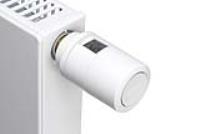 Add My Company
Add My Company
Sign In

Fitting Individual room temperature controls, such as thermostatic radiator valves (TRV), has been announced among a number of requirements for new buildings, and existing buildings.
Required in buildings where heat generators are being replaced, the new Energy Performance of Buildings Directive (EPBD) has said that all EU member states, including the UK, will have 20 months to implement the new Directive into national legislation.
Gareth Ash, Marketing Manager for Danfoss, has welcomed the new requirements, stating that they recognise the energy saving value of low cost, short payback solutions like TRVs.
Gareth explained: “This is good news for the industry and end-users. Properly selected and installed, TRVs are proven to provide accurate temperature control in individual rooms, reducing heating costs and enhancing comfort for consumers. They are also quick and easy to fit in new or retrofit installations, which is another important benefit for installers and their customers.”
A review of existing energy efficiency Directives is reported as finding that relatively low cost energy efficiency solutions, such as hydraulic balancing of the heating system and the installation or replacement of thermostatic control valves, were insufficiently considered.
In order to achieve the intended building energy performance improvements in practice, the new EPBD has stated that the aim should be to improve the actual energy performance of heating systems, air-conditioning systems and ventilation systems under real-life use conditions. The actual performance of such systems is said to be governed by the energy used under varying conditions, such as part load operating conditions.
With this in mind, the new Directive has defined that the installation of self-regulating devices (for example TRVs) should be considered for the separate regulation of the temperature in each room or, where justified, in a designated heated zone of the building unit. This requirement will be subject to the installation of such devices being technically and economically feasible.
The new EPBD is hoped to demonstrate the EU’s commitment to developing a sustainable, competitive, secure and decarbonised energy system by 2050. Decarbonising building stock, which is responsible for approximately 36% of all CO2 emissions in the Union, is seen as key to meeting that goal.
Gareth Ash has therefore said that Danfoss will be working with the European Building Automation Controls Association (EUBAC) to guide the industry through the new requirements as well as simplifying compliance for installers by offering a range of high efficiency heating controls.
For more information on Danfoss welcomes updated requirements to EPBD talk to MyTub Ltd
Enquire Now
List your company on FindTheNeedle.

